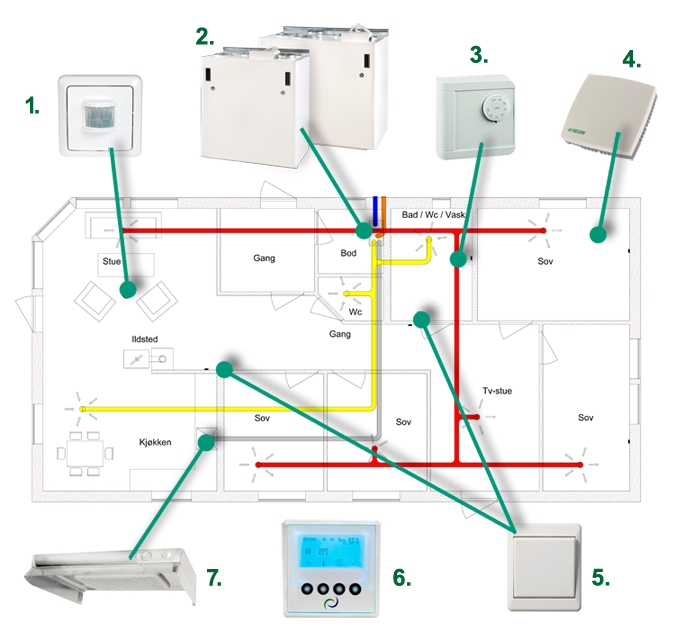How it works
How demand-controlled ventilation works
Demand controlled ventilation Energy efficient ventilation trades in addition to high efficiency and low SFP also to provide proper airflow at the right time. With today’s technology provides the opportunity to demand control ventilation allowing a good indoor environment and low energy consumption are maintained.
- Motion Detector: When installed in the living then this will signal to the unit to increase the speed to max airflow.
- Ventilation unit located in suitable rooms in central residence (utility room / laundry room) to ensure easy access for service and filter change.
- Moisture Sensor: This is built in to the unit, as standard, from the factory. (Except for the product AHU-200 (Expired)). When installing additional sensors in bathrooms / wet, then this sensor will provide faster signal about the moisture level in the room and provide quicker forced ventilation. (max airflow).
- CO2 sensor: Can be installed in living rooms, will signal to the unit on the pollution level in the room. The ventilation is regulated as required.
- Oven / Fireplace / Bathrooms: Wireless pulse switch can be used for increased supply using hearth. Mounted on suitable location in relation to the fire. Can also be placed near the bathroom for easy operation by forced ventilation. (Max airflow)
- Control Panel 0100051 placed at a suitable location in your home to do the monitoring and regulation of ventilation as simple as possible.On newer models except (AHU-200, AHU-300 Ceiling, AHU 400 Ceiling, AHU 200 KV and KH), the control panel mounted in the front door from factory. Reorder an extra control panel if you wish regulation of ventilation from another room.
- The unit is suitable for connection of an external kitchen hood. This is an alternative solution for problems with exhaust through the wall.

